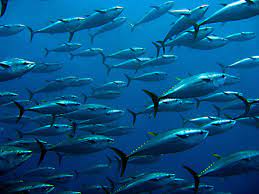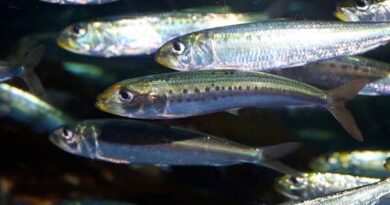Fisheries Enhancement: Forms, Constraints and Reasons
Fisheries enhancement involves activities targeting the supplementation or sustaining the recruitment of one or more aquatic organisms and raising the total production of selected elements of a fishery beyond a level which is sustainable by natural processes.
We mentioned five forms of fisheries enhancement in this article. Traditional fisheries enhancement involves two main systems mainly habitat modification and retention systems. There are constraints which sometimes lead to failures of fisheries enhancement schemes
Definition of Fisheries Enhancement
Fisheries enhancement refers to production systems beyond extractive, unmanaged open access and/or managed capture fisheries.
The Food and Agriculture Organisation of the United Nations defines ‘enhanced fisheries’ as “activities aimed at supplementing or sustaining the recruitment of one or more aquatic organisms and raising the total production or the production of selected elements of a fishery beyond a level which is sustainable by natural processes”.
Forms of Fisheries Enhancement
Forms of fisheries enhancement include (Welcomme and Bartley, 1998):
Introduction of new species to exploit underutilized parts of the food chain or habitat.
Stocking of water bodies to improve recruitment.
Fertilization of the water to increase productivity.
Engineering the environment to improve fish reproduction, migration, provide shelter and food resources.
Elimination of predators and other unwanted species.
Traditional Fisheries Enhancement
Traditional fisheries enhancement systems or measures have the following characteristics in common:
A degree of management and intervention beyond traditional capture fisheries
Property rights which are defined more narrowly than in capture fisheries.
Areas of intervention in traditional fisheries enhancement include movement of fish stocks, extent of water retention, water quality (fertility) and/or availability of fish feed.
Enhancement techniques may be associated with and/or combined with methods like the attraction or confinement of fish. Fisheries enhancement systems depend on the same resources as capture fisheries.
They involve smaller water bodies which can be guarded and harvested more easily than larger rivers and lakes. Unlike in capture fisheries, exclusive use rights over the enhanced fisheries resources and enhancement facilities are usually necessary.
Fisheries enhancement systems or measures are usually in competition with other forms of resource use such as capture fisheries. Traditional fisheries enhancement systems are based on local knowledge and subject to traditional rules and regulations applicable to resource utilization.
The traditional fisheries enhancement systems may be based on:
Habitat modification or fish shelter systems
By introducing structures which attract fish e.g. fish aggregating devices (FADs) in capture fisheries; provide periodic shelter which improves stock recruitment, survival rates of juvenile fish and/or natural food supply.
These systems are referred to as shelter fisheries systems. Many fish species associate themselves with floating or drifting objects which provide shelter and protection against predators.
Fish aggregating systems exploit this behavior to attract fish and increase catches. These systems also improve fish habitats or provide additional feed thereby enhancing the resource. An example of this system is the brush park.
Brush parks are submerged structures made up of wooden materials – brushes and branches which are usually fixed to the bottom of a shallow water body.
Brush parks are located in brackish water lagoons, but are also found in freshwater lakes and rivers. They cover water areas ranging from few square metres to several hectares. They are labour- intensive to construct and operate. They:
Offer some fish species a protected environment for breeding, spawning and feeding
Provide additional fish food in form of aquatic organisms attached to underwater substrates and associated fauna which colonise the structures
Attract fish.
Retention systems
The fish retention system is the traditional enhancement technique closest to aquaculture.
They involve the retention of water by physical structures such as weirs, flood depressions and ponds; water management and some control over fish stocks.
Fish can either be stocked or naturally present in the retained water and their production is aided by feeding and/or fertilization.
Permanentor semi-permanent barriers
Barriers and dams are made of reeds, grass, mud or more solid materials across mall channels or used to raise natural embankments to control the inflow and outflow of water and retain fish.
Traps, baskets or nets are used for fishing while the water is still in place, or by breaching the dam and releasing the water through nets or traps and collecting the remaining fish when the bottom becomes dry.

Fences and traps
A combination of fences and traps built from bamboo or palm fronds can be used to exploit fish migration patterns.
Fences and traps are closer to fish-catching devices than to enhancement systems, when they do not involve additional management measures.
Drain-inponds
In floodplains and other seasonally inundated areas, naturally occurring depressions are deepened or ponds are dug to prolong the retention of water and lengthen the fish-harvesting season. These structures are known as drain-in ponds or fish holes.
Fish enter these ponds during the floods and are trapped as the waters recede. Drain-in ponds exploit the annual cycle of flooding and drying. During the wet season, the rivers overflow their banks and flood waters extend across the plains acquiring nutrients from terrestrial sources.
Fish are able to move freely in flooded areas taking advantage of increase in primary productivity and a seasonal increase in fish biomass. Drain-in ponds become congested with vegetation during the dry season and may become anoxic during high water temperatures.
Management includes feeding of retained fish mainly with agricultural wastes and by-products or fertilizing the pond water. Retention ponds can also be stocked with juvenile fish sourced from open waters.
Read Also : Basic Concept of Fisheries Management
Constraints of Traditional Fisheries Enhancements
Constraints on fish sheltering and retention systems include:
High financial and labour investments for the construction and maintenance of large fish sheltering systems such as brush parks.
Market constraints arising from the harvesting of larger sheltering systems which leads to bulk supplies resulting in low market prices and low returns on investment.
Environmental problems from large-scale construction and deforestation may require wood purchase from long distances which may cause conflicts with local communities.
Resource use conflicts as fish retention systems require established user rights over a long period. Conflicts occur where suitable sites for water retention are limited and other users are excluded from the benefits of fish retention and resource use.
The productivity of traditional retention systems suffers due to poor water management. Fish production in confined water bodies is reduced by low levels of oxygen, high concentrations of wastes and low water exchange.
Reasons for Failures of Fisheries Enhancement Projects in Africa
Low returns on investment leads to loss of interest in fish farming and enhancement schemes.
Fish farming is labour-intensive and may divert attention from other farming activities. Many aquaculture projects are not planned in collaboration with target groups and experts.
Production inputs such as agricultural land and water always have opportunity costs. The availability and regular supply of fingerlings is also a constraint to long-term sustainability of fish farming. Feed and fertilizers for fish farming also have other uses.
The specific skills and knowledge required for aquaculture are not part of traditional African knowledge systems.
Comprehensive interventions in the rearing process of aquatic organisms and their environment have no tradition in Africa.
African traditional institutions do not provide a context conducive to modern fisheries enhancement and aquaculture because:
Modern fisheries enhancement and aquaculture require large investments and are viable only if the benefits can be realized by those bearing the costs.
Traditional land and water use rights are not always secure enough to justify investments in facilities.
Modern fisheries enhancement as culture-based fisheries in open waters is feasible only if exclusive use rights are granted to investors which often contravene the traditional use and access rights.
In summary, traditional fisheries enhancements explore methods of increasing fish yield. These include systems such as the brush parks and retention systems in which fish may be fed or the water fertilized.
However, large investments may be required which may not produce adequate returns as the system may continue to allow open access.
Read Also : Complete Waste Management For Restaurants









